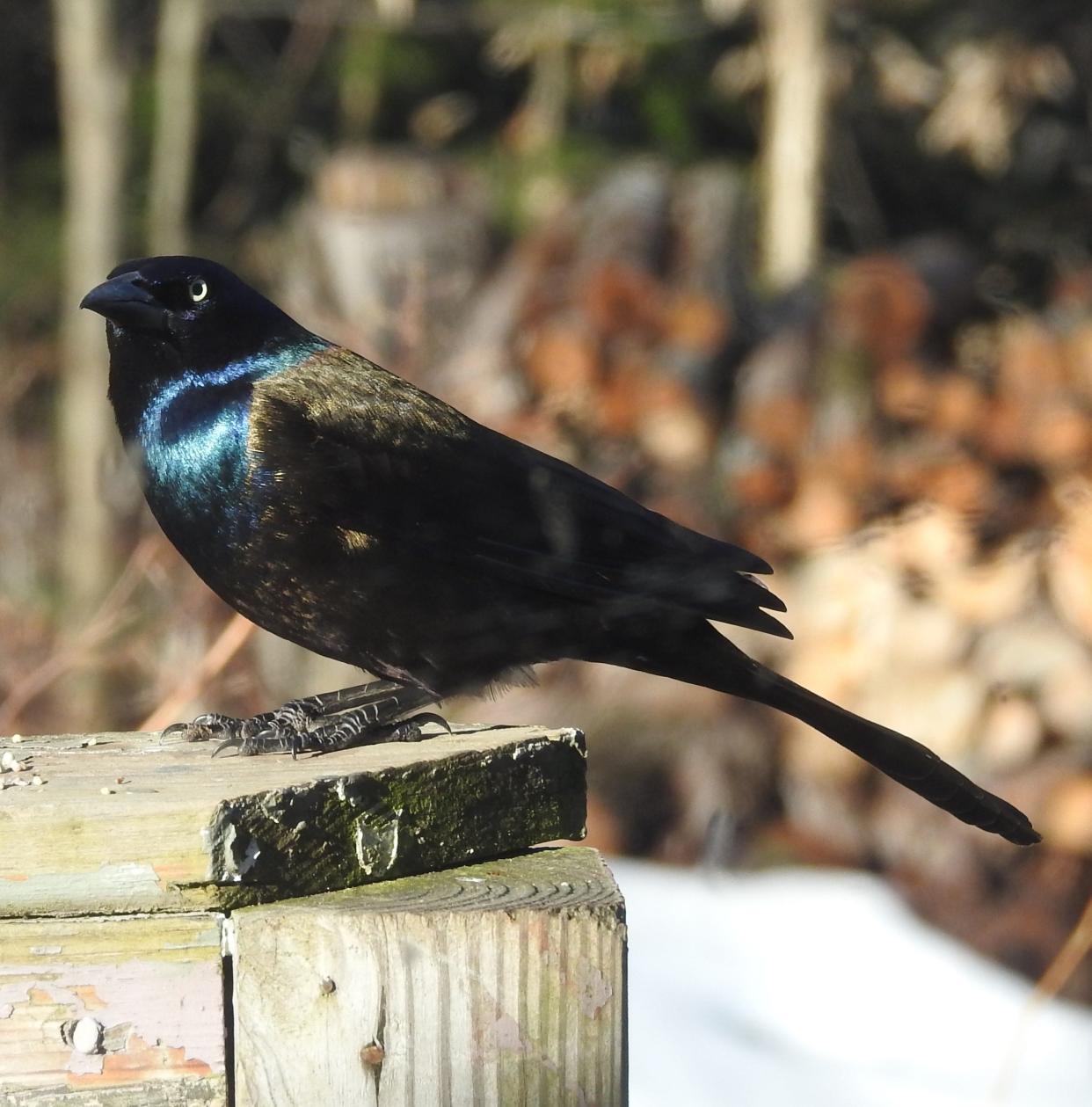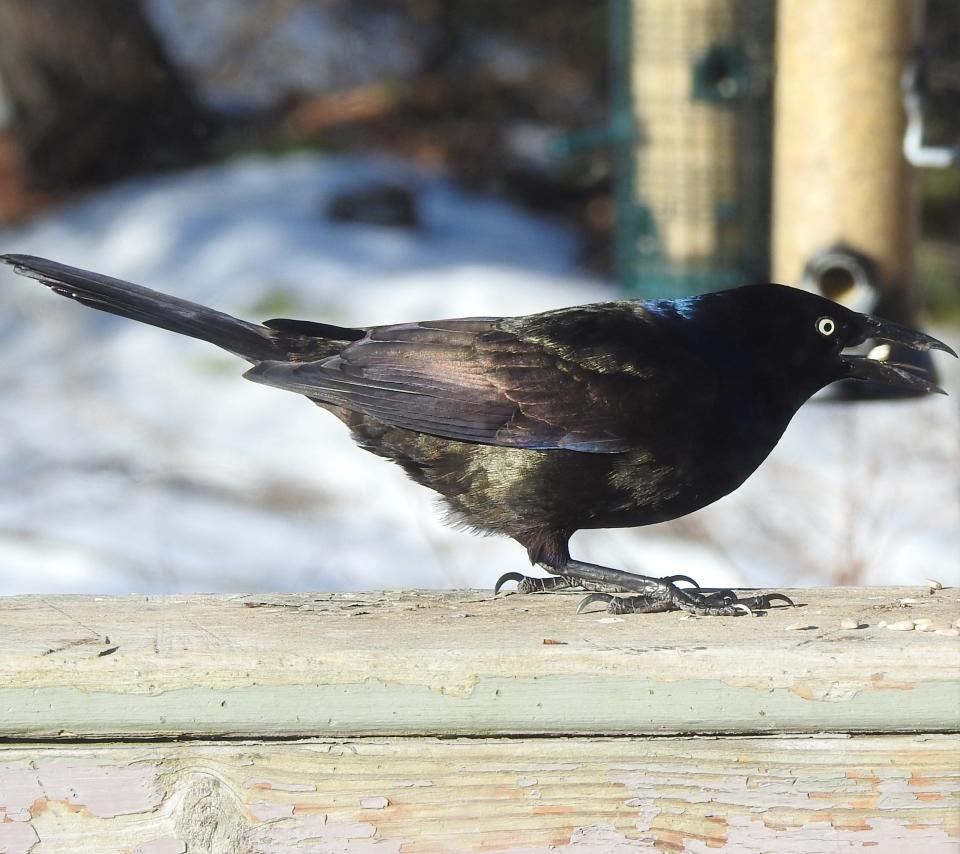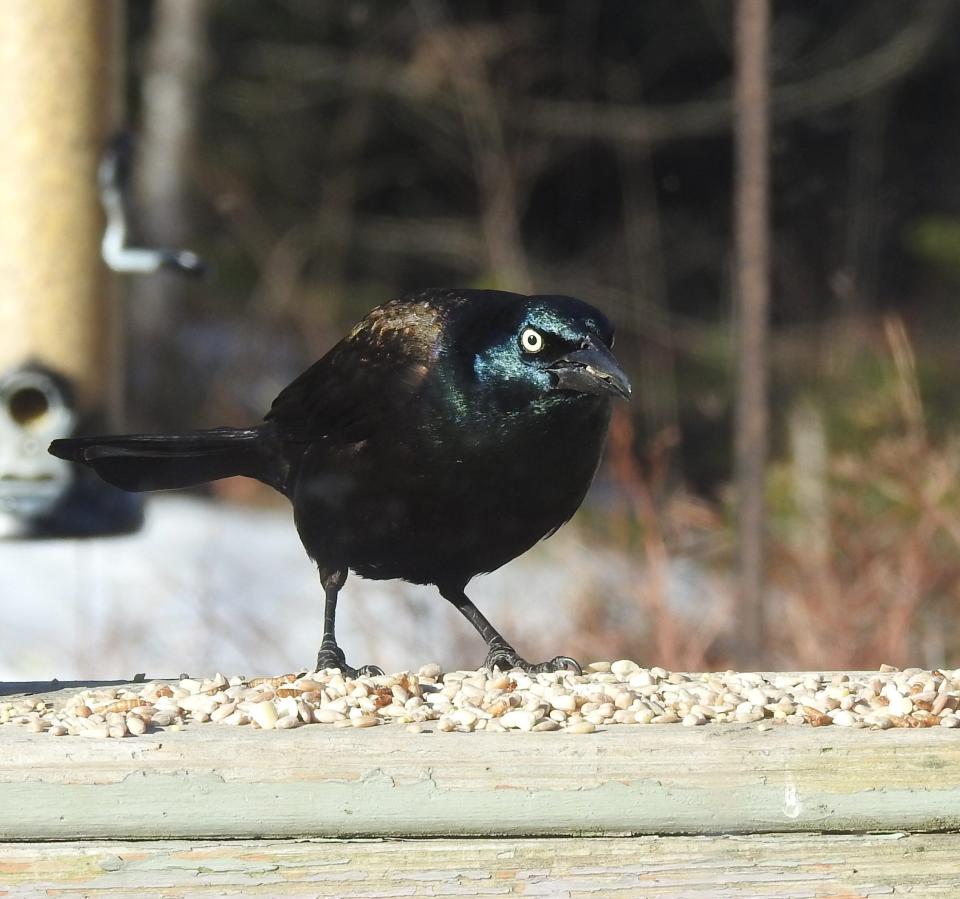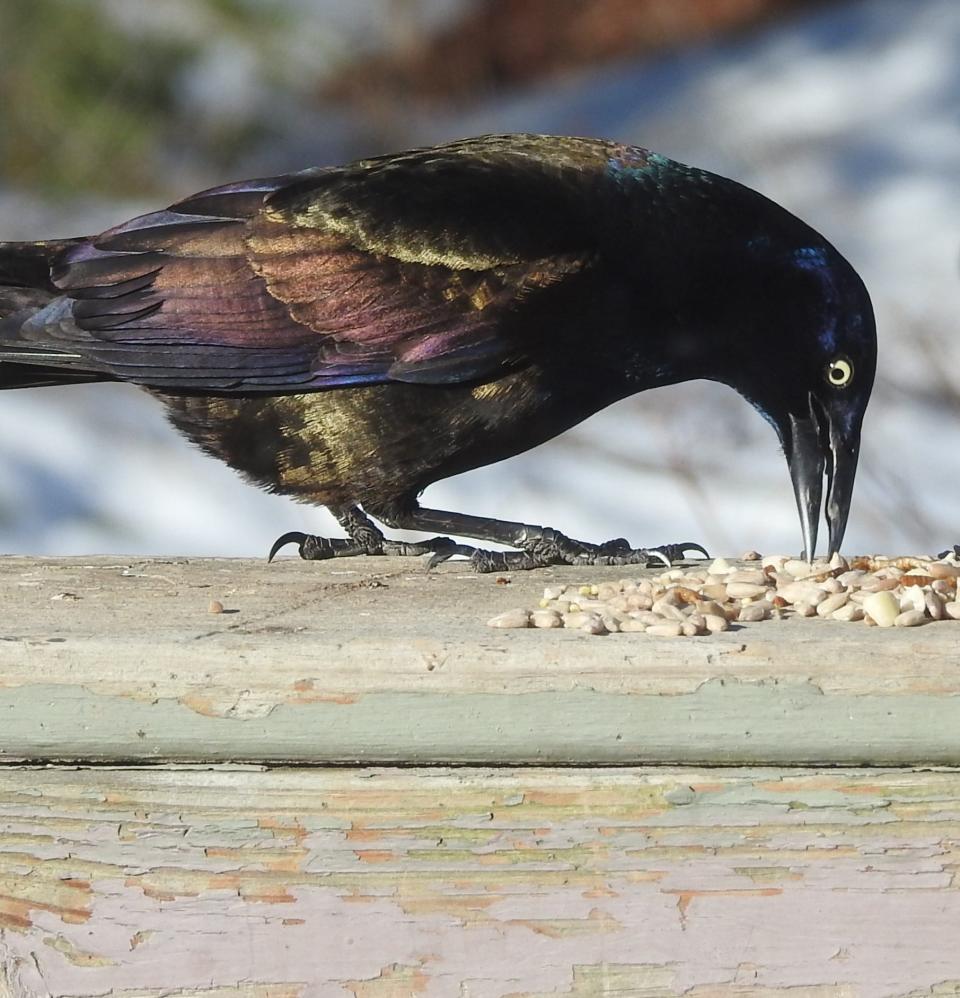Grackles are a noisy sign of spring: Nature News

When we think about signs of spring in New England, what usually comes to mind? Flocks of robins, red-winged blackbirds staking out territory in the marsh, vernal pools and peepers (they’ve been peeping for at least a week here in coastal New England)...but how about grackles? These iridescent "blackbirds" show up around the same time as red-winged blackbirds, but their flock size often dwarfs the handful of red-winged blackbirds that show up at my feeder. I’ve been seeing, and hearing, them here in North Berwick since early March when some huge flocks (the largest I’ve seen numbered in the hundreds, but in winter flocks can consist of thousands to millions of birds!) moved through.
These are common grackles (Quiscalus quiscula)-iridescent black birds with long tails, long beaks and relatively (they look like stretched out blackbirds) long legs. The males are much more iridescent than the more subdued females. The final distinguishing feature − these are gregarious, social, noisy birds. The Cornell Lab of Ornithology talks about their endless “raucous chattering”. In addition to their noisiness, people often mention how unpleasant that noisiness is. For example Sibley’s Guide to Birds talks about their “unmusical, harsh, metallic hiss and toneless kerrr” - they use the word “harsh” three times in this description! An Audubon.org describes their calls as “grating” and “creaking”. A brief interview with folks in my neighborhood divided people up into two very distinct camps—those who find these birds whimsical and amusing, their calls “endearing” and those who agree with the more negative descriptions. I am in the camp who finds them cute. When you have a flock in your neighborhood it is deafening; a cacophony of creaking wheels.

Right now is the tail end of migration, most pairs (common grackles are mostly monogamous) have started to form and possible nesting sites are being checked out. The female is typically the one to find the nest site and build the nest, though males have been observed helping out. They build a large cup composed of plant stems and twigs, leaves and fine grasses along with a variety of human-derived ingredients: paper, string, cloth, corn husks, tape and wire for example. The inside of the cup is lined with mud and then padded with fine grasses or horse hair. The nests are built in a variety of different types of trees at a variety of different heights − they particularly like treetops.

According to the Cornell Lab of Ornithology the nest is usually built high in a coniferous tree between two vertical limbs or on a horizontal branch (although nests have been recorded as low as eight inches off the ground and in deciduous vegetation, cattails and other sites). I would love to find a nest. I’ve yet to observe breeding pairs, much less a nest. I’ve only noticed the large flocks.
Common grackles are currently abundant and widespread-even expanding their range westward. Their population sky-rocketed when European settlers began clearing land for agriculture. However, according to the American Breeding Bird Survey their numbers are now in steep decline. The International Union for the Conservation of Nature (IUCN) recently listed common grackles as being near threatened. In my lifetime their numbers have decreased by almost 60%!

Humans have a long, antagonistic relationship with grackles. According to the Cornell Lab of Ornithology “...grackles are the #1 threat to corn. They eat ripening corn as well as corn sprouts, and their habit of foraging in big flocks means they have a multimillion dollar impact.” We consider them pests and so lethal control methods can be used to reduce damage to crops – this is thought to be contributing to their decline. But, here’s the thing, these animals that we despise the most, that we are most willing to call pests, are frequently the ones most compatible with us; animals like pigeons, rats, cockroaches and grackles. Grackles are common in the suburbs, along our roads and in our cornfields. The only place you won’t find them is in large expanses of forest. They like it that humans have developed New England and are keeping large, undisturbed tracts of forest at bay. They like it when we move in, they profit from our way of life—eat our corn, swarm our birdfeeders, and exploit what we do. So I say why not welcome them? They are a sign of spring that is difficult to ignore.

Susan Pike, a researcher and an environmental sciences and biology teacher at Dover High School, welcomes your ideas for future column topics. Send your photos and observations to spike3116@gmail.com. Read more of her Nature News columns online at Seacoastonline.com and pikes-hikes.com, and follow her on Instagram @pikeshikes.
This article originally appeared on Portsmouth Herald: Grackles make some noise: Nature News

